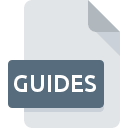.GUIDES File Extension

xScope Guides File
| Developer | The Iconfactory |
| Popularity | |
| Category | Data Files |
| Format | .GUIDES |
| Cross Platform | Update Soon |
What is an GUIDES file?
.GUIDES files are associated with xScope Guides, a tool primarily used for web and interface design. These files contain guides created within the xScope application, aiding designers in aligning and positioning elements accurately during the design process. Guides are crucial for maintaining consistency and precision in layout design across various platforms.
More Information.
Initially introduced as a macOS application, xScope aimed to streamline the design and development workflow by providing a suite of precise measurement and alignment tools. The inclusion of .GUIDES files allowed designers to save and share custom guides created within the application, fostering collaboration and consistency across design teams.
Origin Of This File.
The .GUIDES file extension originates from the xScope application developed by The Iconfactory. xScope is a comprehensive set of tools tailored for designers and developers working on macOS, enabling them to measure, inspect, and test designs efficiently.
File Structure Technical Specification.
.GUIDES files typically store data in a structured format, containing information about the position, orientation, and properties of guides within a design canvas. The technical specifications of .GUIDES files are tailored to the requirements of xScope, ensuring compatibility and optimal performance within the application.
How to Convert the File?
Windows:
Converting .GUIDES files on Windows requires additional steps due to the exclusive compatibility of xScope with macOS.
Follow these steps:
- Export the design or measurements from xScope in a compatible format such as PNG, PDF, or SVG.
- Transfer the exported file to your Windows machine using cloud storage, USB drive, or other means.
- Open the exported file using design software compatible with Windows, such as Adobe Illustrator, Sketch, or Figma.
- Make any necessary adjustments or edits to the design elements within the chosen software.
- Save the modified file in your preferred format for further use or sharing.
Linux:
Converting .GUIDES files on Linux also involves using alternative design software due to the macOS exclusivity of xScope.
Here’s how:
- Export the design or measurements from xScope in a compatible format like PNG, PDF, or SVG.
- Transfer the exported file to your Linux machine via cloud storage, USB drive, or other methods.
- Utilize design software compatible with Linux distributions, such as Inkscape, GIMP, or Gravit Designer, to open the exported file.
- Edit or manipulate the design elements as needed within the chosen software.
- Save the modified file in your desired format for further use or sharing.
Mac:
Converting .GUIDES files on macOS typically involves exporting the guides or design elements from xScope in alternative formats.
Here are the steps:
- Open the .GUIDES file in xScope.
- Export the guides or design elements in a compatible format such as PNG, PDF, or SVG.
- Use macOS native applications like Preview, Adobe Illustrator, or Sketch to open the exported file.
- Edit or adjust the design elements within the chosen application as necessary.
- Save the modified file in your preferred format for future use or sharing.
Android and iOS:
Converting .GUIDES files directly on Android or iOS devices is not possible due to the exclusive compatibility of xScope with macOS.
However, you can follow these alternative steps:
- Export the design or measurements from xScope in a compatible format like PNG, PDF, or SVG.
- Transfer the exported file to your Android or iOS device via cloud storage, email, or other means.
- Use design applications available on Android or iOS platforms, such as Adobe Illustrator Draw, Affinity Designer, or Procreate, to open the exported file.
- Make any necessary edits or adjustments to the design elements within the chosen application.
- Save the modified file in a format suitable for your intended use or sharing.
Advantages And Disadvantages.
Advantages:
- Facilitates precise alignment and positioning of design elements.
- Enhances collaboration and consistency in design workflows.
- Saves time by allowing designers to reuse custom guides across projects.
Disadvantages:
- Limited compatibility with other design tools or applications.
- May require familiarity with xScope interface for effective utilization.
- Lack of flexibility in editing or manipulating guides outside of xScope environment.
How to Open GUIDES?
Open In Windows
.GUIDES files are primarily intended for use with xScope, which is available exclusively for macOS. To open .GUIDES files on Windows, users can explore alternative design tools with similar functionality or use virtualization software to run macOS on a Windows machine.
Open In Linux
Similar to Windows, opening .GUIDES files on Linux requires using alternative design software compatible with Linux distributions or employing virtualization to run macOS within a Linux environment.
Open In MAC
.GUIDES files can be opened directly on macOS using the xScope application. Simply double-clicking the file should launch xScope, enabling users to access and manipulate the guides within the application.
Open In Android
.GUIDES files are not natively supported on Android, iOS, or other platforms. However, designers can export designs or measurements from xScope in formats compatible with these platforms, such as PNG or PDF, for further use or integration into mobile design workflows.
Open In IOS
.GUIDES files are not natively supported on Android, iOS, or other platforms. However, designers can export designs or measurements from xScope in formats compatible with these platforms, such as PNG or PDF, for further use or integration into mobile design workflows.
Open in Others
.GUIDES files are not natively supported on Android, iOS, or other platforms. However, designers can export designs or measurements from xScope in formats compatible with these platforms, such as PNG or PDF, for further use or integration into mobile design workflows.













